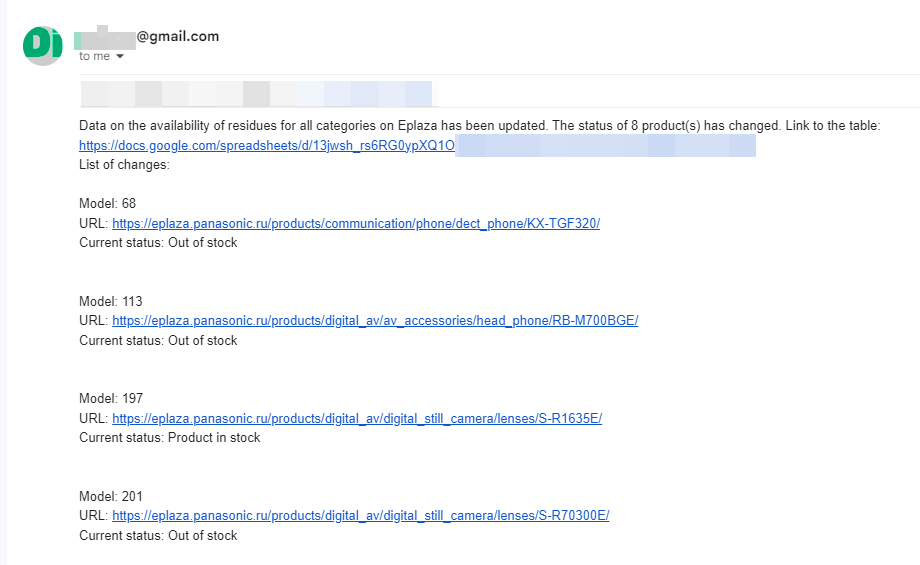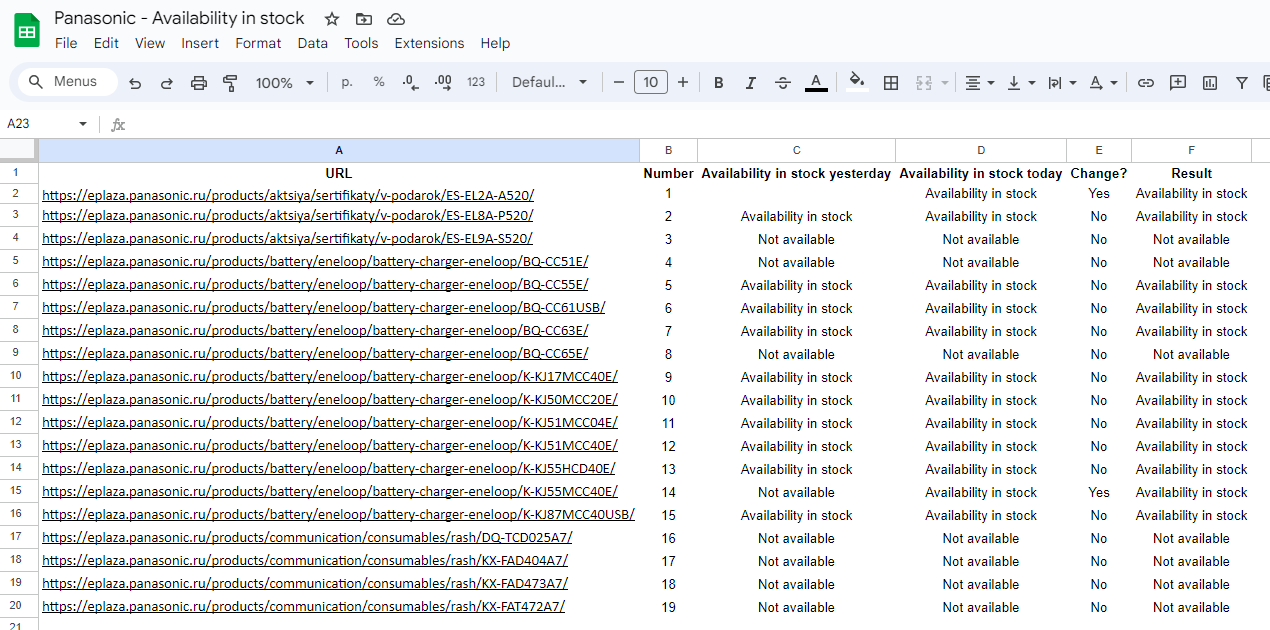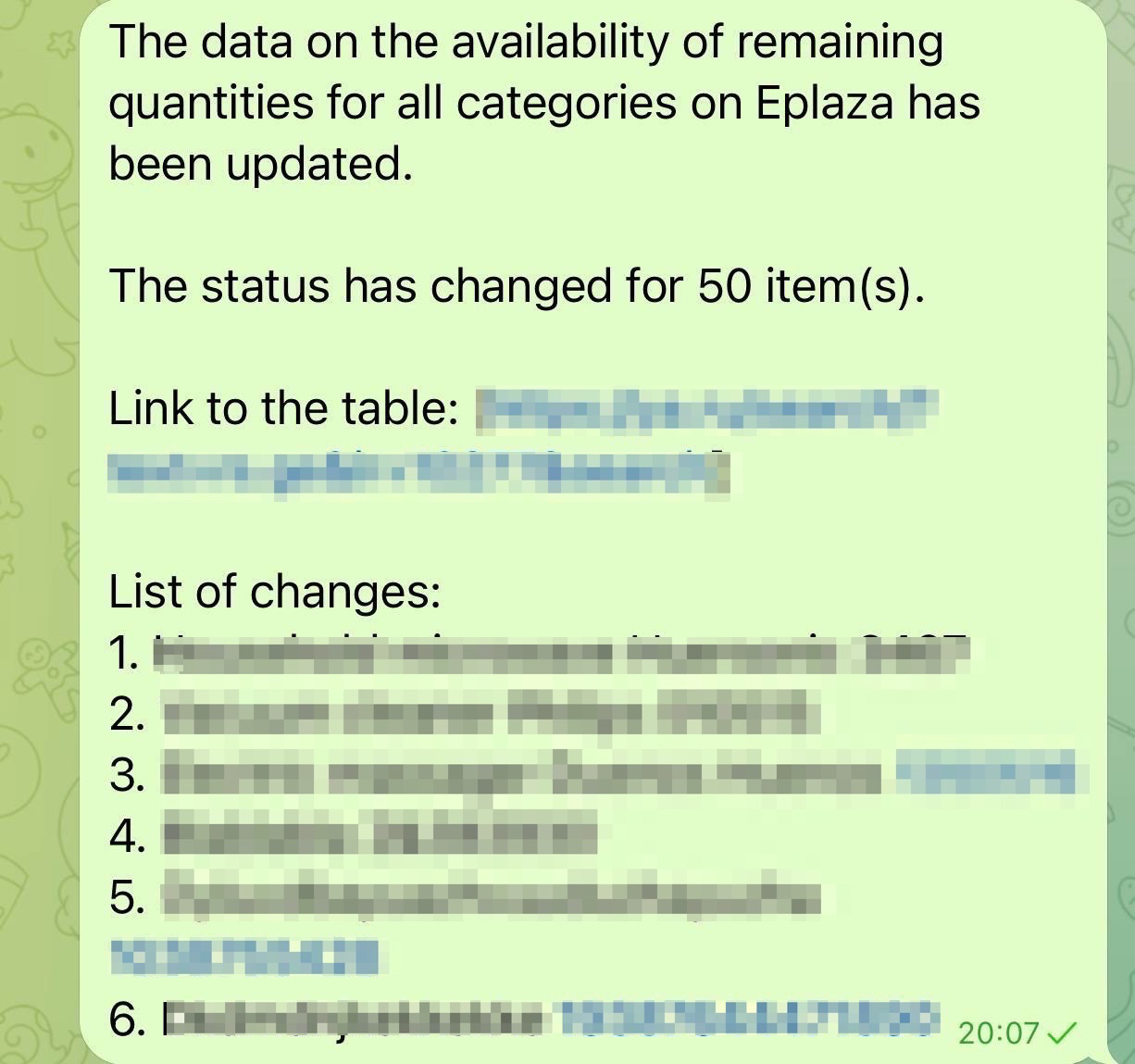360 Times Faster: How To Automate the Pausing and Launching of Contextual Advertising
alquimedez.com/
Company
Panasonic
Tools
RPA
Industry
Electronics
2021
Company Description
Panasonic is one of the largest electronics manufacturers in the world. They produce audio and video electronics, information and communication equipment, household appliances, and electronic components.
Panasonic sells its products on twelve online platforms, including "Citilink," DNS, Ozon, and Wildberries. It conducts a large part of the contextual advertising on these platforms to increase sales volume.
Panasonic sells its products on twelve online platforms, including "Citilink," DNS, Ozon, and Wildberries. It conducts a large part of the contextual advertising on these platforms to increase sales volume.
Решение
Задача
Создали и внедрили автоматические отчеты и отслеживание эффективности работы менеджеров в Kommo
Внедрить автоматические отчеты.
● Total leads: won, lost, in progress
● Number of leads per manager: won, lost, in progress
● Total leads: won, lost, in progress
● Number of leads per manager: won, lost, in progress
Создание отчета и мониторинг эффективности работы менеджеров в Kommo.
Решение
Задача
Создали и внедрили автоматические отчеты и отслеживание эффективности работы менеджеров в Kommo
Внедрить автоматические отчеты.
● Total leads: won, lost, in progress
● Number of leads per manager: won, lost, in progress
● Total leads: won, lost, in progress
● Number of leads per manager: won, lost, in progress
Создание отчета и мониторинг эффективности работы менеджеров в Kommo.

Challenge
When a company sells hundreds of products on multiple marketplaces and uses contextual advertising, it is crucial to track inventory levels. If a product runs out of stock, but the advertising continues to run, it results in losses for the business. Now, imagine if there are dozens of such products. This happens because online stores sometimes provide information about product inventory with a delay of a week or more. In this case, a contextual advertising specialist cannot manually check hundreds of pages in time; hiring a separate employee for this task is an option, but there is a simpler and more cost-effective solution: automation.


Tasks
- Product availability tracking automation
- Automated pausing/enabling advertising campaigns
What have we done?
We have created a system that automatically collects information on the availability of Panasonic products on all online platforms. If the product is out of stock, its advertising in Google Ads is automatically paused. If the item is back on sale, the system enables the promotion again with no human intervention.
In addition, the algorithm sends notifications to employees. It offers Panasonic managers to replenish stocks of products in a certain store, and informs our specialists that advertising for goods that are out of stock is paused.
In addition, the algorithm sends notifications to employees. It offers Panasonic managers to replenish stocks of products in a certain store, and informs our specialists that advertising for goods that are out of stock is paused.
How does the system work?
We have written two scripts. One of them automatically collects data on product availability on marketplaces and enters them into a file in Google Sheets. The second script, using this information, enables or pauses advertising, leading to a specific page.

The algorithm determines the status of the product by two indicators: price and button text. So, if there is a price on the page and an "Add to cart" button, the system considers that the product is on sale. If there is no price, but there is a "Back in stock" notification button, then the item is identified as out of stock. Due to the difference in site layouts, we customized the main script for each platform. The program generates two columns with the results of the previous and current day.
After that, the second algorithm comes into play. It compares two columns and determines the change in the status for each product. If the algorithm identifies that the product has appeared on the site, it enables an advertisement and vice versa.



The service automatically opens the document, iterates all the links and checks product availability. We have compiled a list of URLs of the necessary pages in online stores for this purpose. One can also collect information from XML files uploaded from all sites. However, there were few items, up to 200 on each site, so we chose the first option.
Let us give a more detailed explanation
In order to quickly find out the results of the tracking, we integrated the solution with Make.com. After parsing the results, we receive a short message about the number of changes in Telegram and an email with more detailed information. The same data is then forwarded to Panasonic employees.


What were the difficulties?
Most online stores have robot protection. In order to pass off our algorithm as a real user, we taught it to act like a human: launch the browser, open developer tools, use cookies, and so on.
The second difficulty is related to the frequent changes in the layout of the site eplaza.panasonic.ru. To avoid errors, we added another condition to the script. If the service finds neither price nor any of the buttons, it asks us to check product availability manually. And the system automatically pauses advertising of such products just in case.
The second difficulty is related to the frequent changes in the layout of the site eplaza.panasonic.ru. To avoid errors, we added another condition to the script. If the service finds neither price nor any of the buttons, it asks us to check product availability manually. And the system automatically pauses advertising of such products just in case.
Why didn't we use readymade software?
We have reviewed various services, but have not found one that is compatible with all the necessary platforms. As a rule, readymade solutions provide access only to popular marketplaces, such as Ozon and Wildberries.
There was another reason to create our own algorithm. We had to delegate not only product availability tracking, but also enabling/pausing the ad in Google Ads. No readymade software can do that yet.
There was another reason to create our own algorithm. We had to delegate not only product availability tracking, but also enabling/pausing the ad in Google Ads. No readymade software can do that yet.
Results:
Saved the customer about 150 thousand rubles per month by
Implementing automatic pausing and enabling of advertising campaigns
Reduced the time of product availability tracking by 99.72%: from 2-3 days to 10 minutes.
Panasonic receives information about products availability on all the platforms on a daily basis and promptly replenishes stocks
Saved the cost of paying one full-time employee for the agency.
Implementing automatic pausing and enabling of advertising campaigns
Reduced the time of product availability tracking by 99.72%: from 2-3 days to 10 minutes.
Panasonic receives information about products availability on all the platforms on a daily basis and promptly replenishes stocks
Saved the cost of paying one full-time employee for the agency.





Need a sign that it's time to automate your sales funnel? Here it is!
Leave your details and we will get back to you
By clicking the "LET'S TALK" button, I consent to the
to the processing of my personal data.
to the processing of my personal data.
